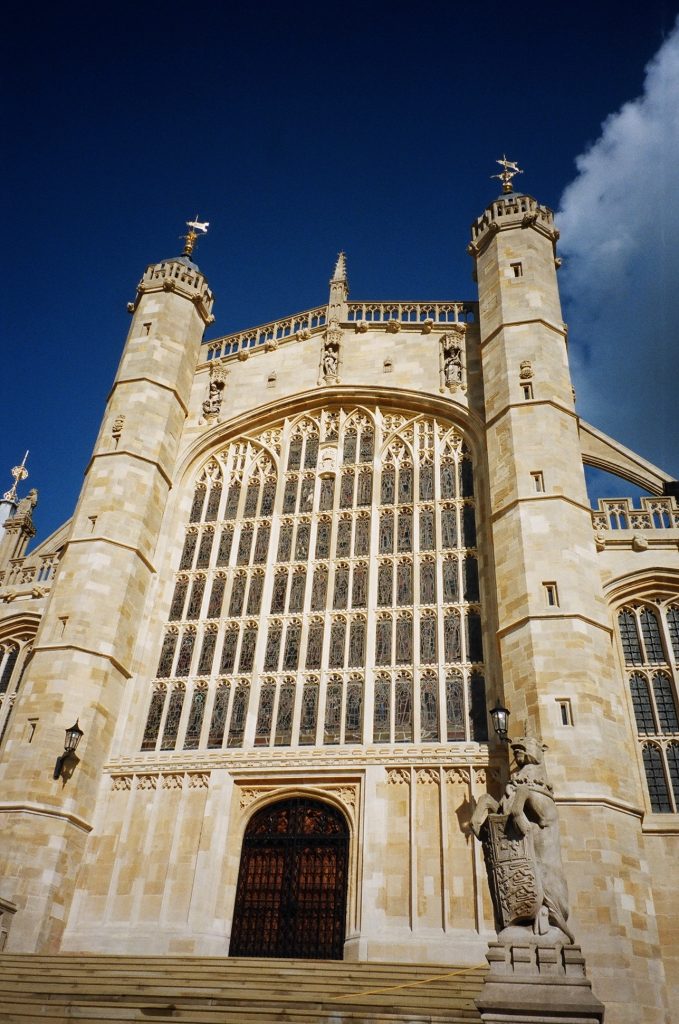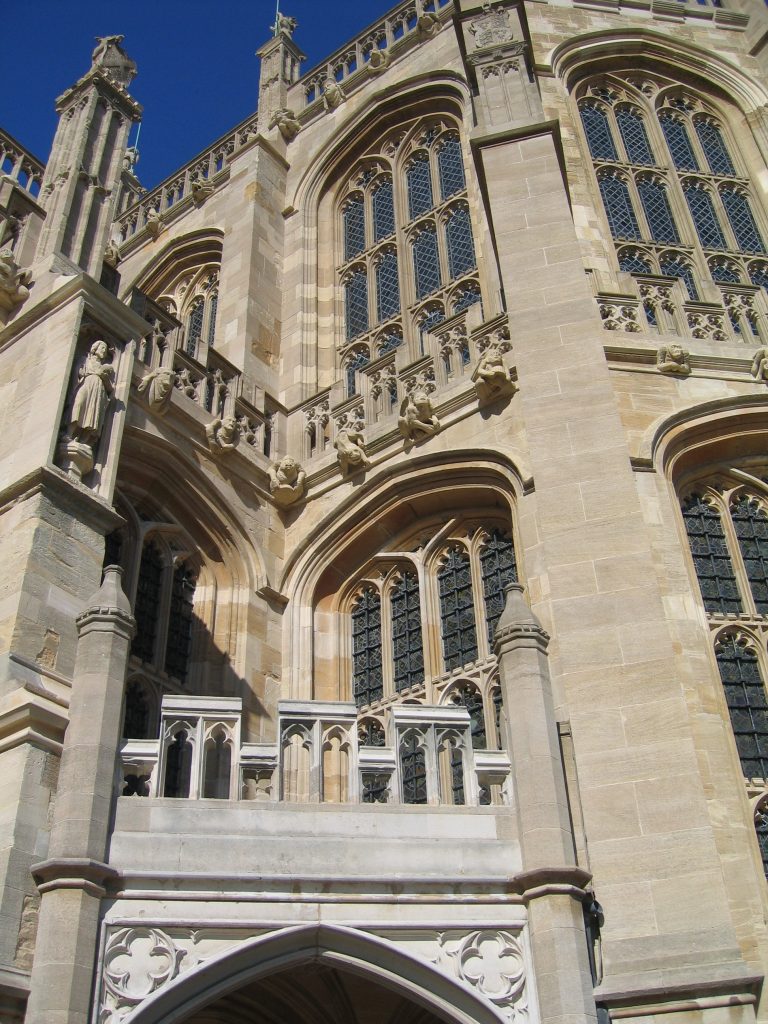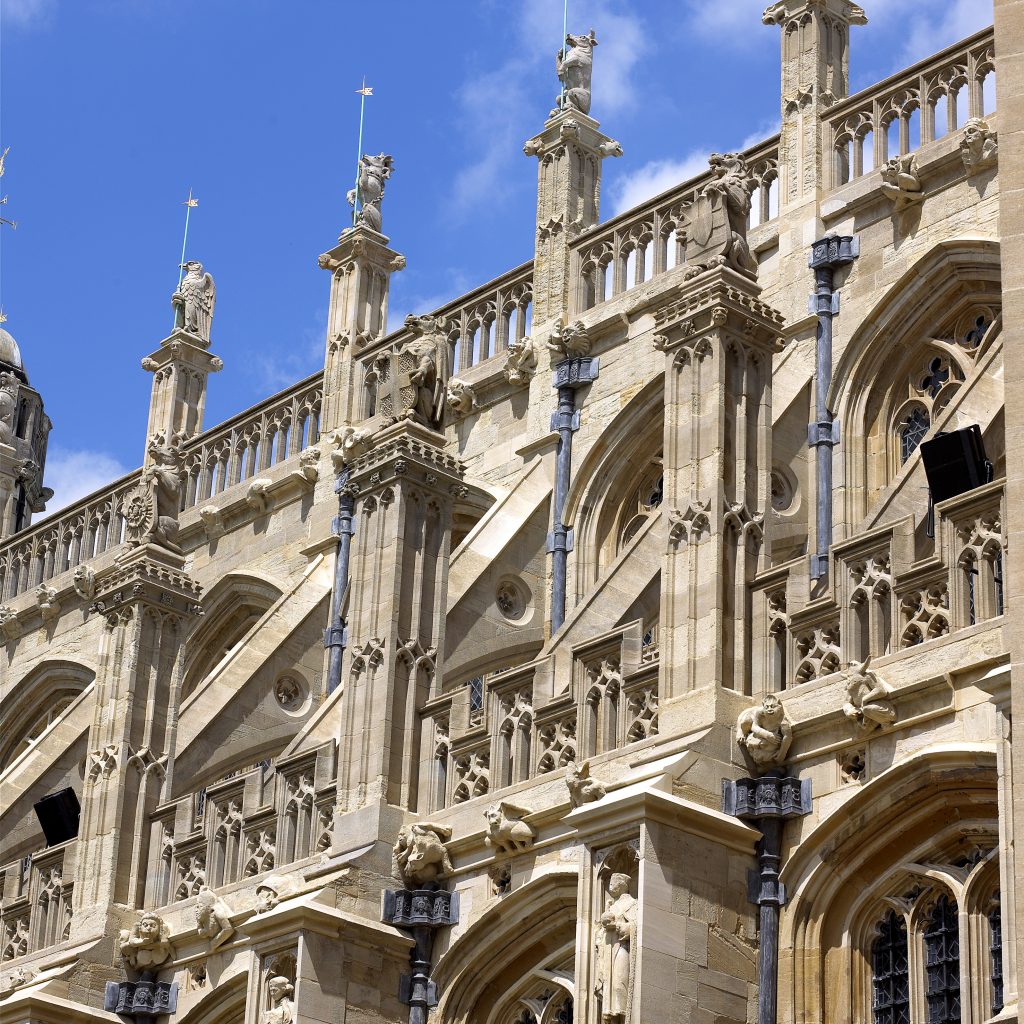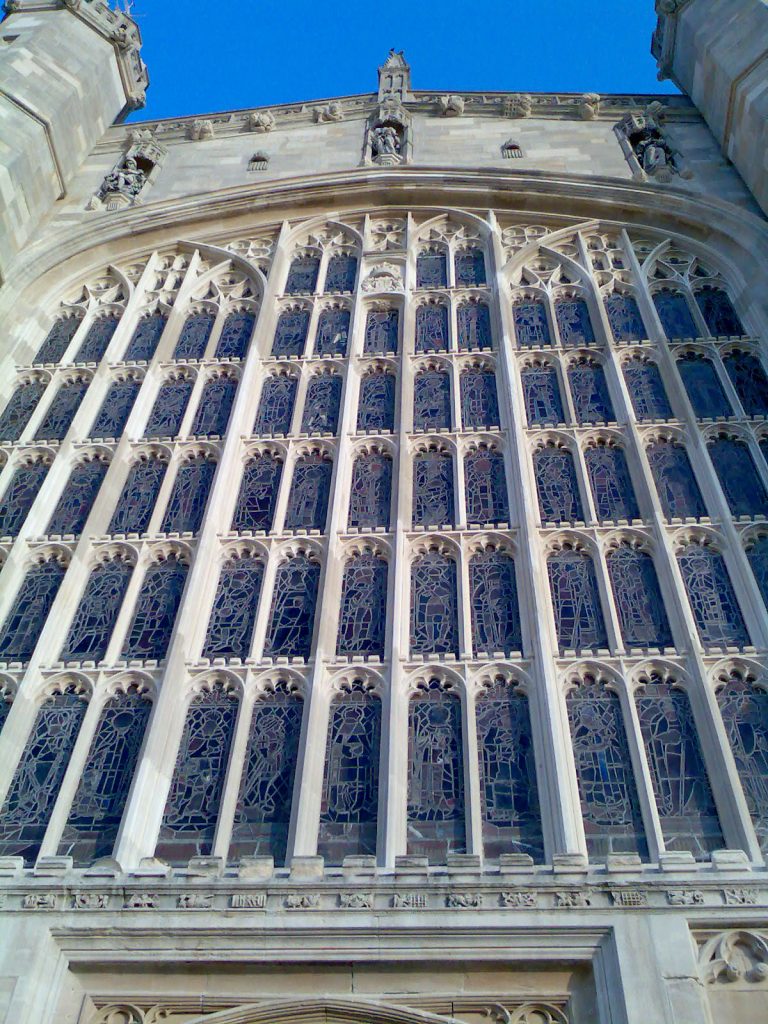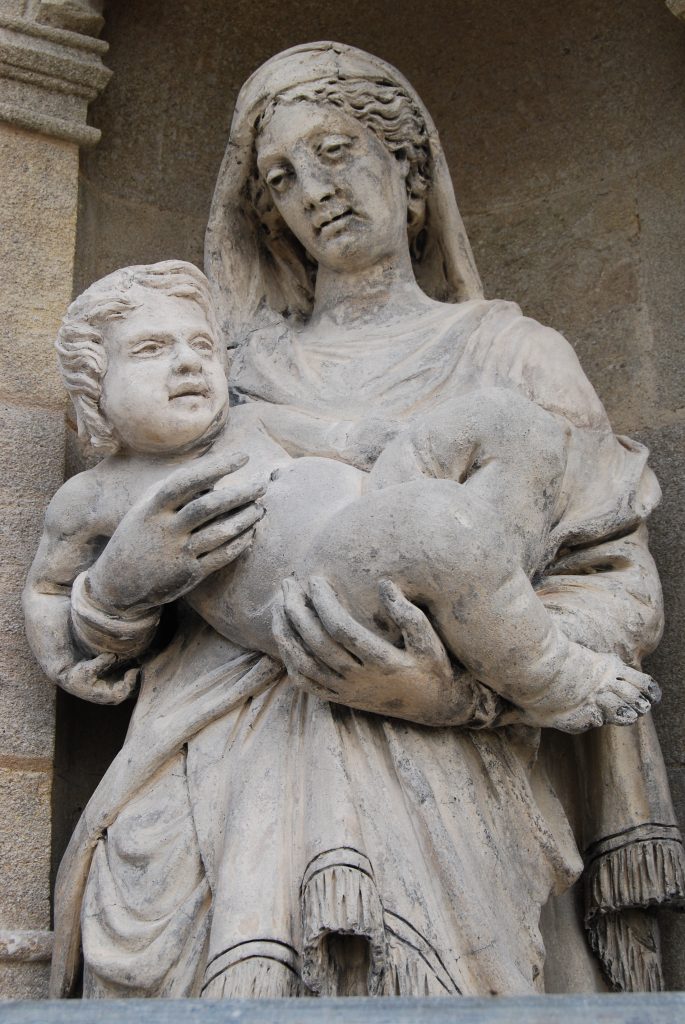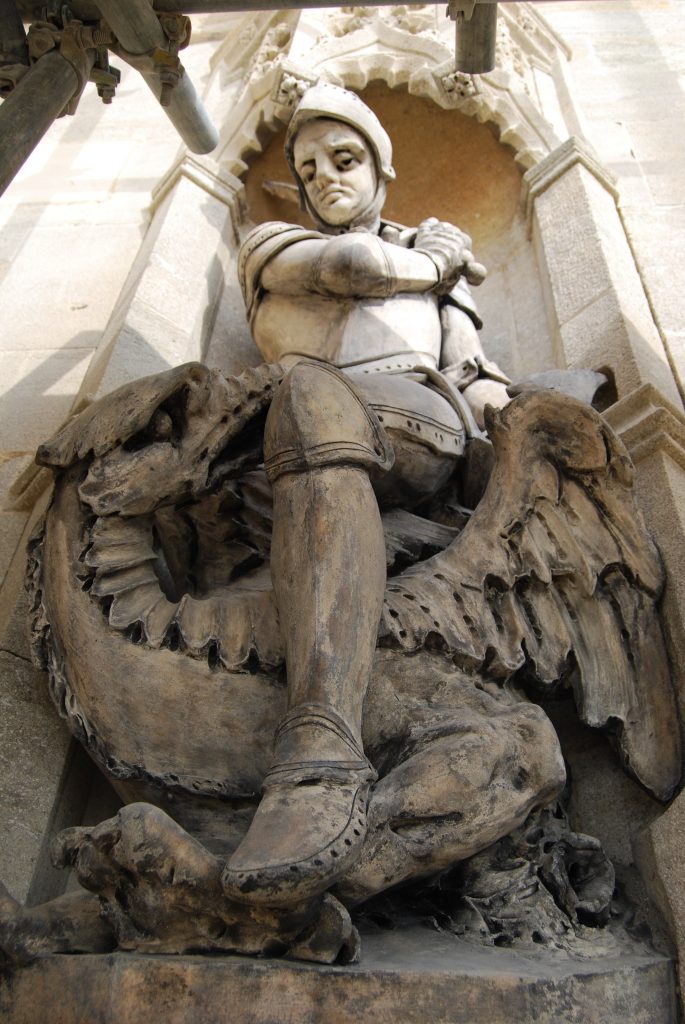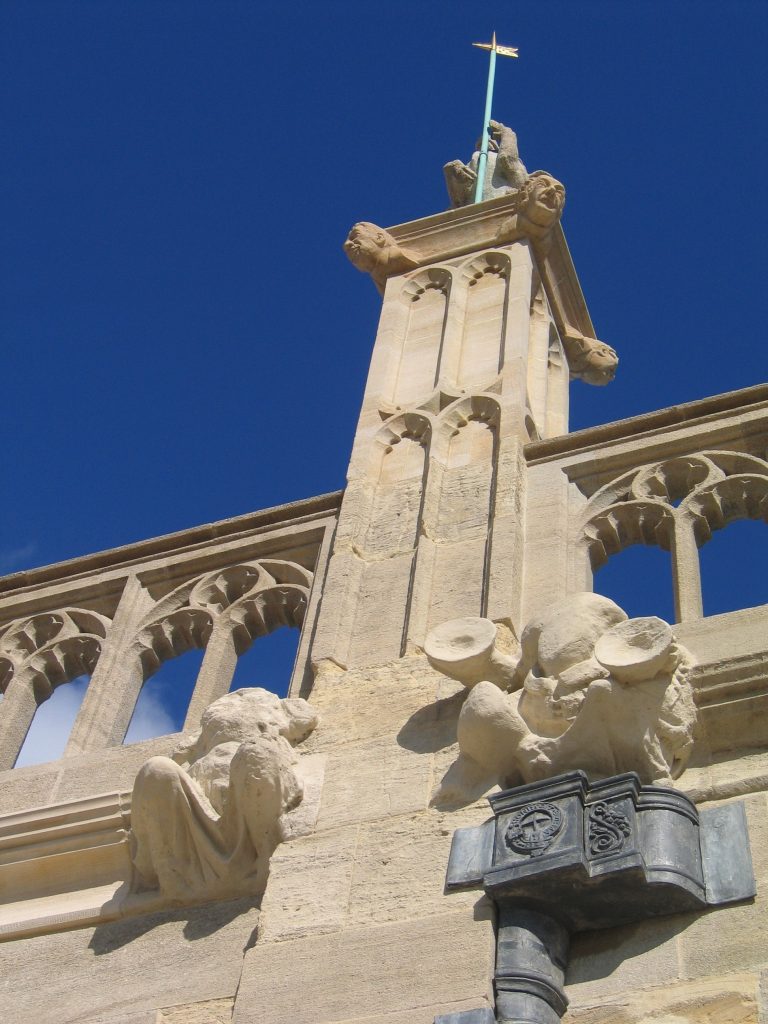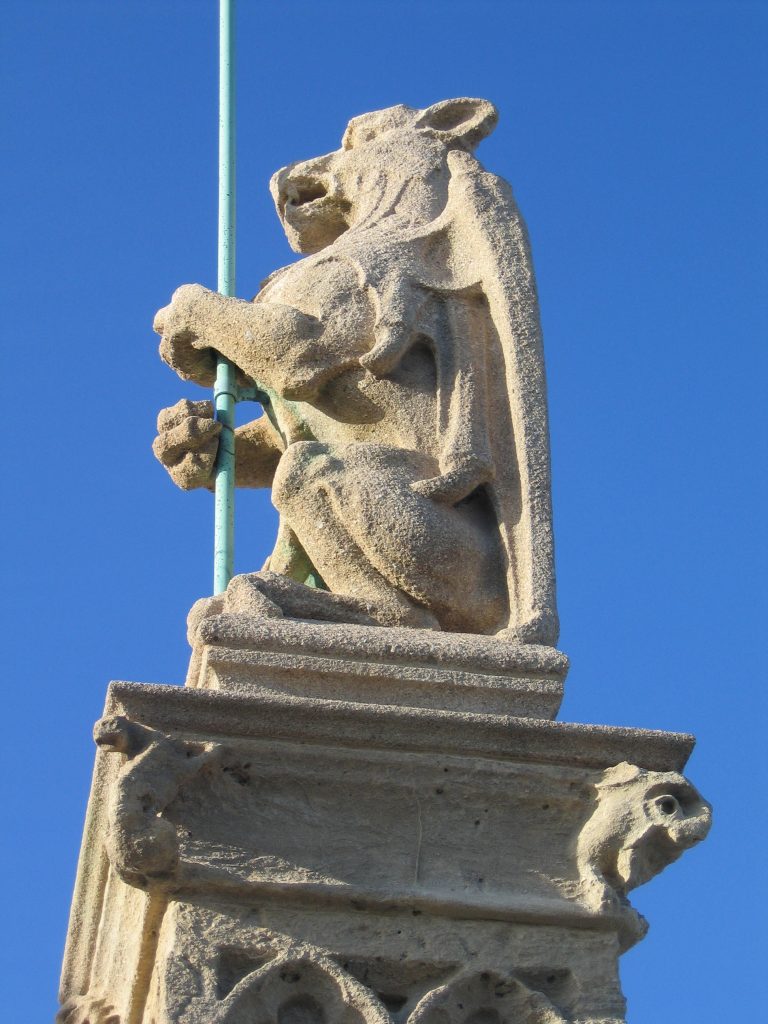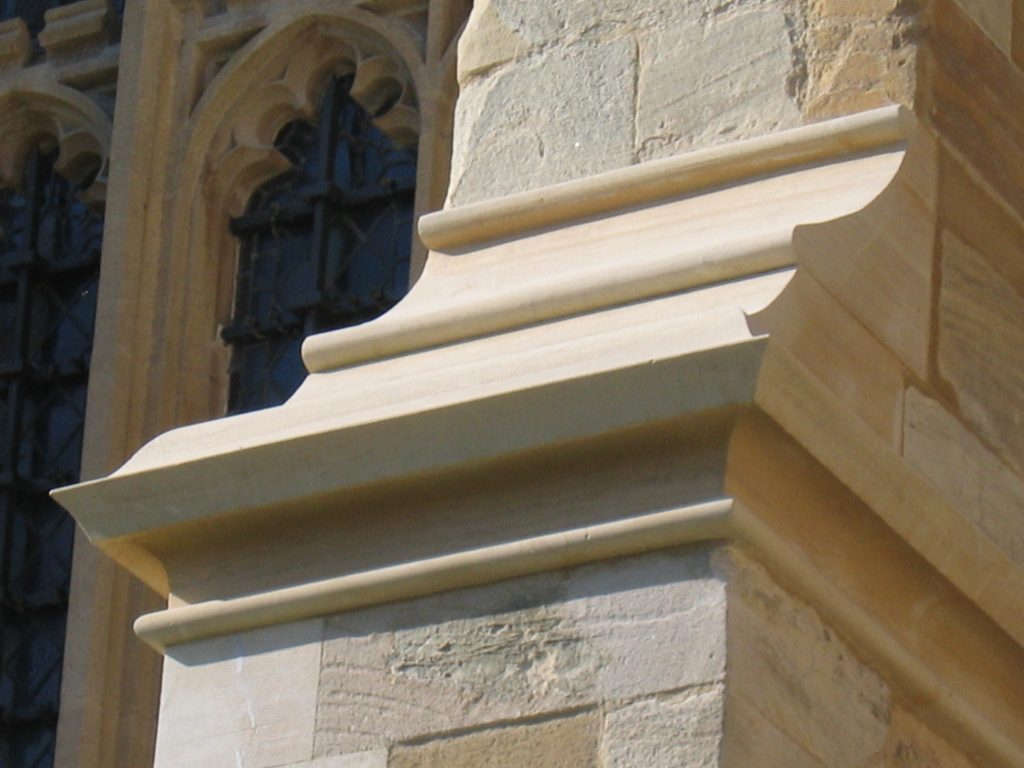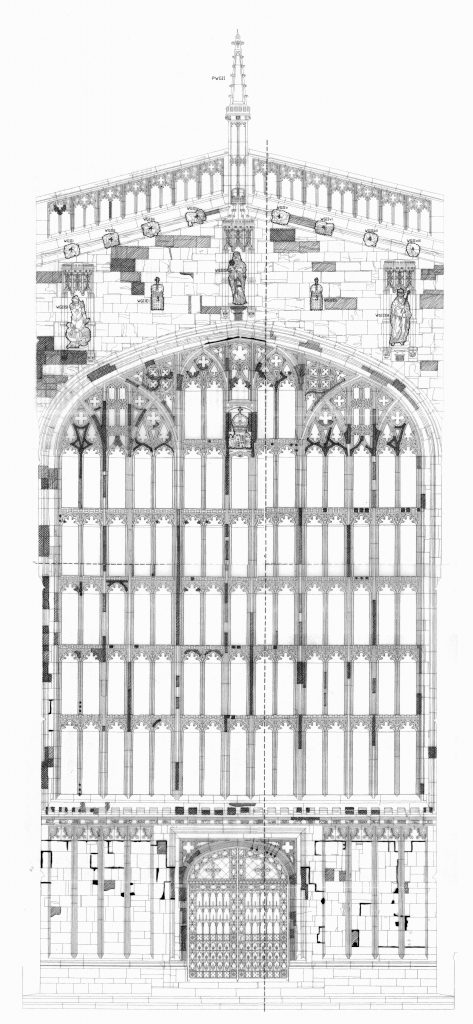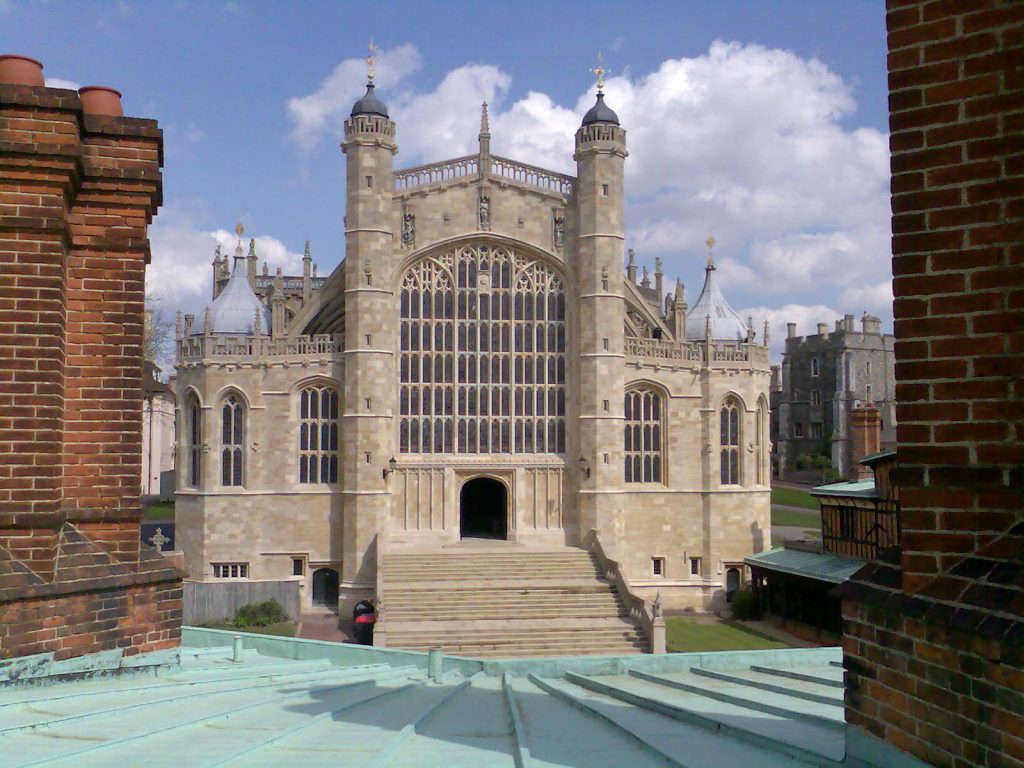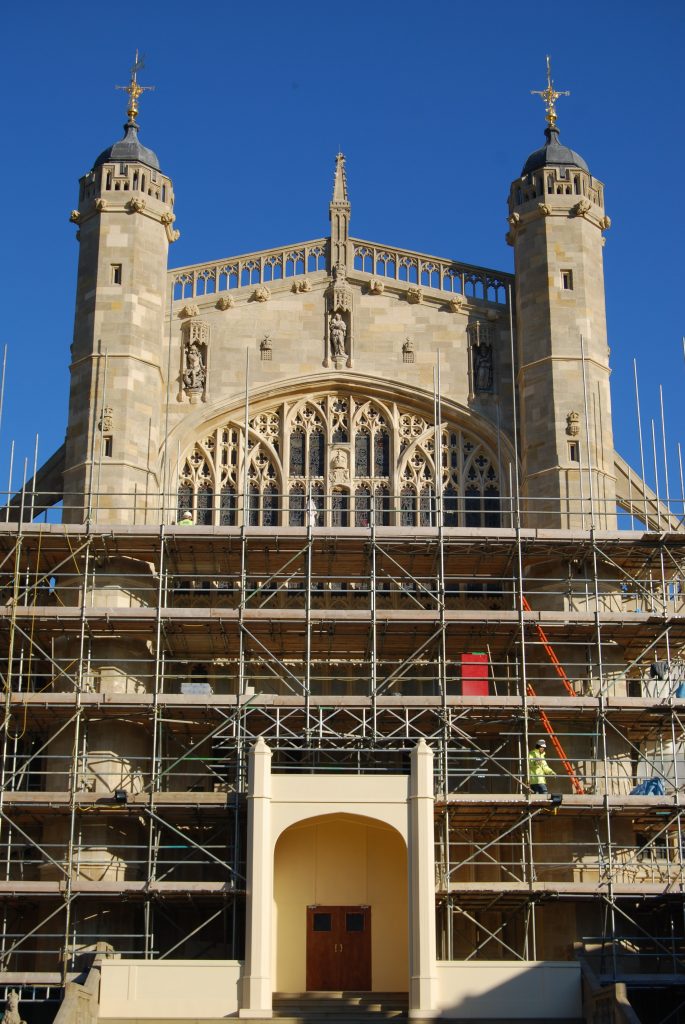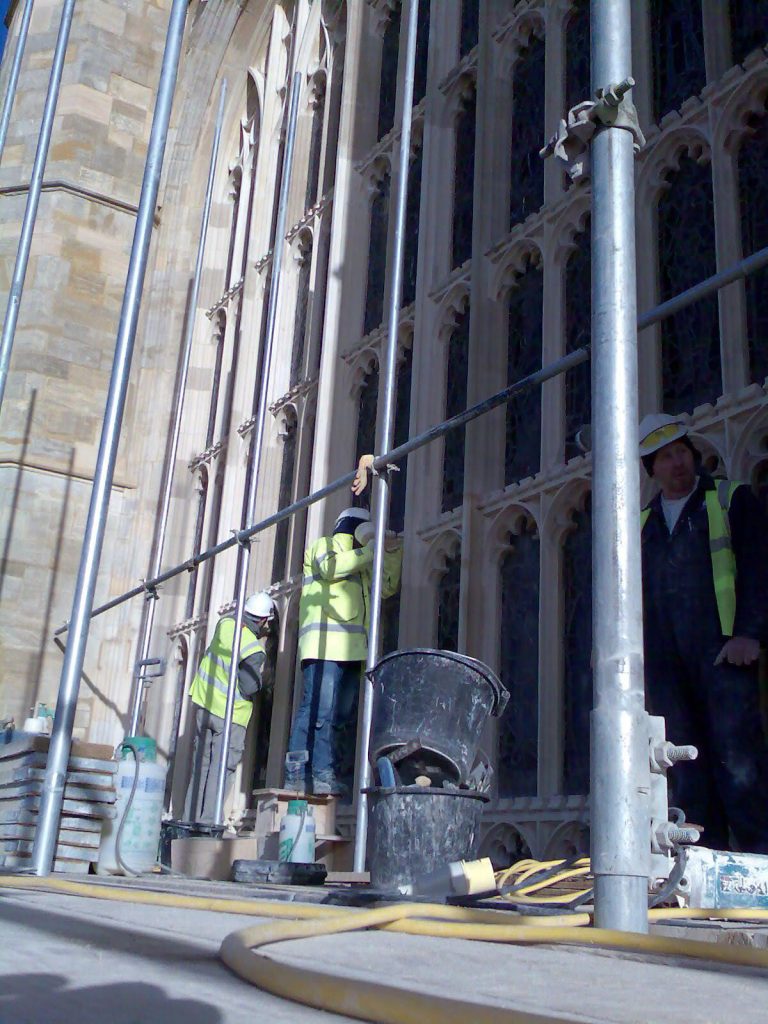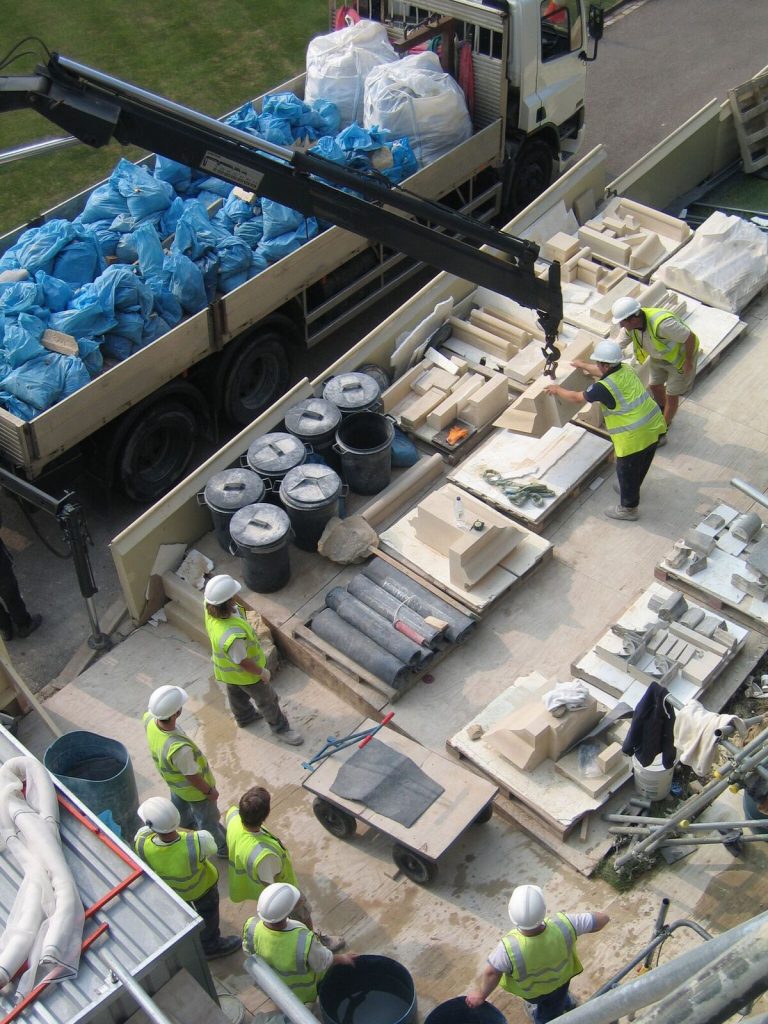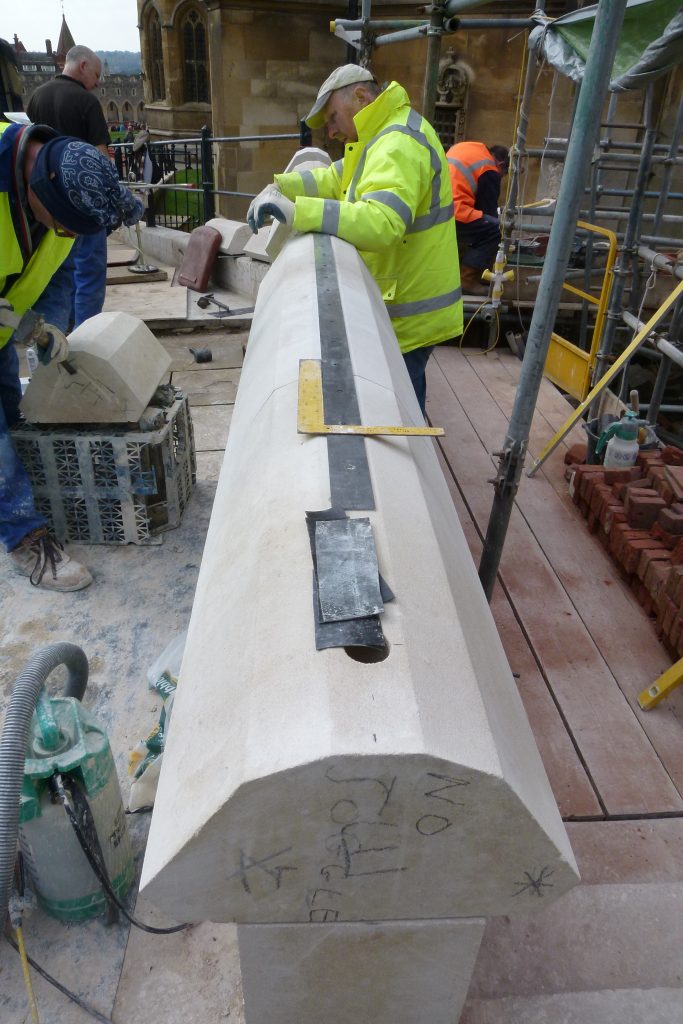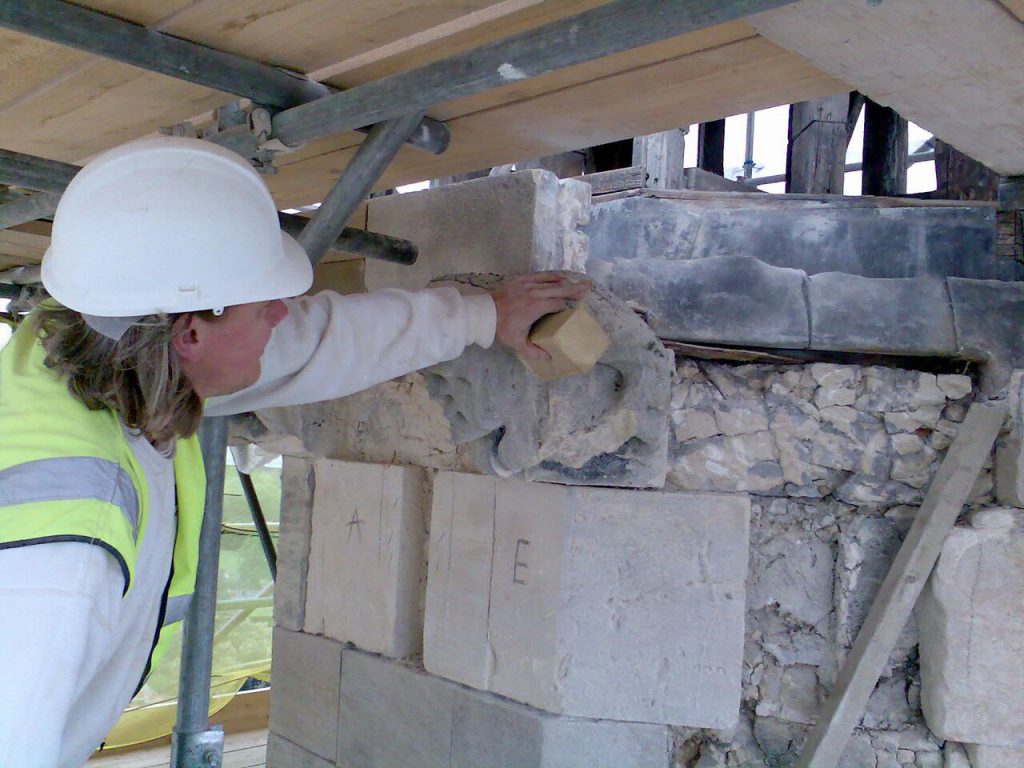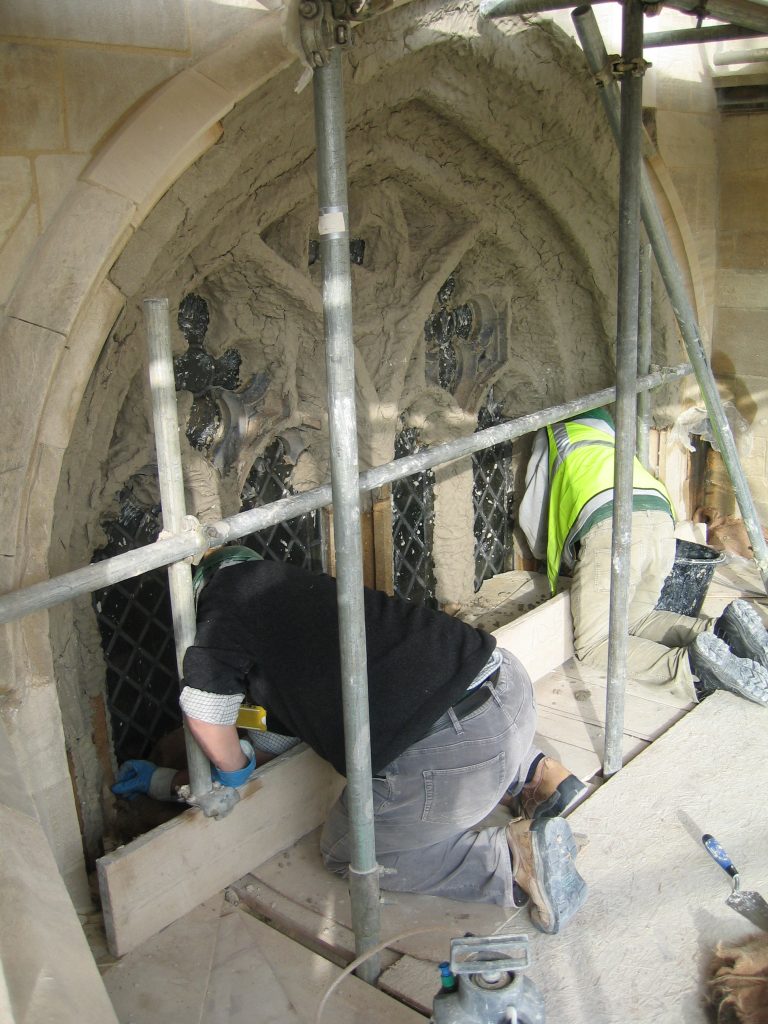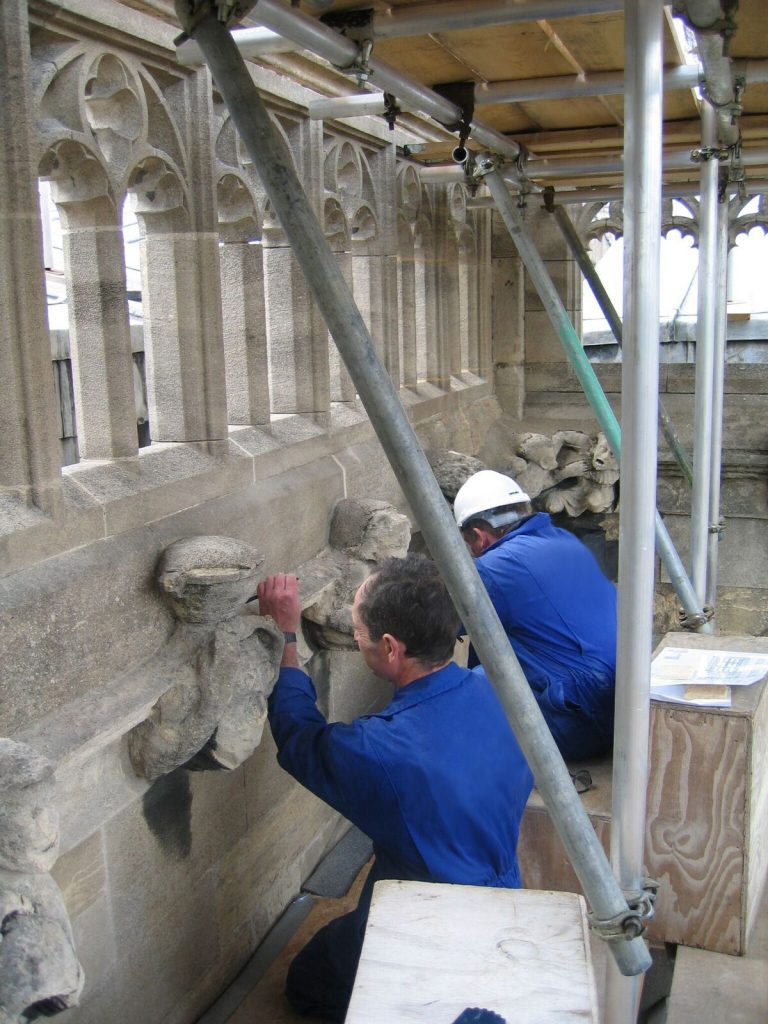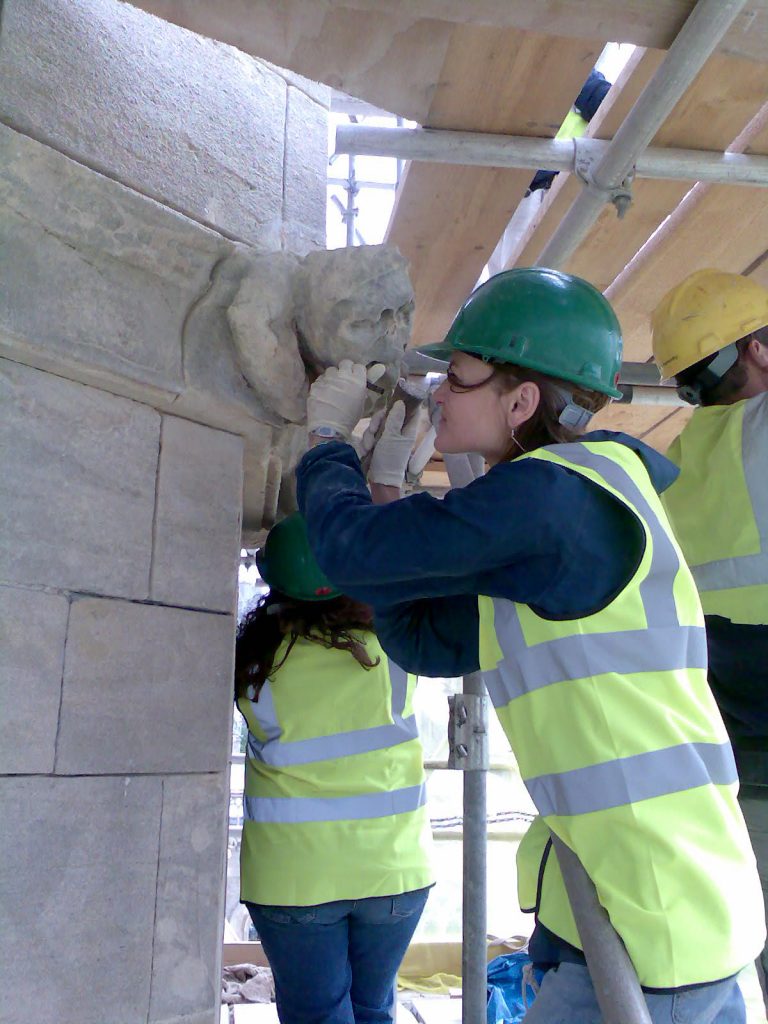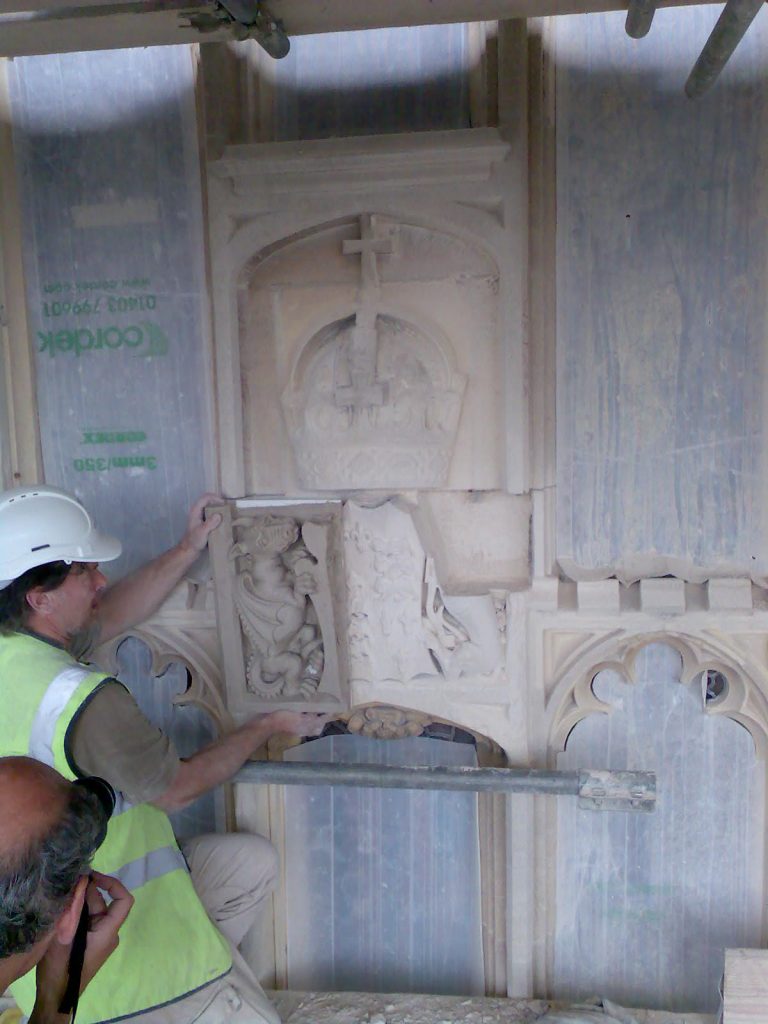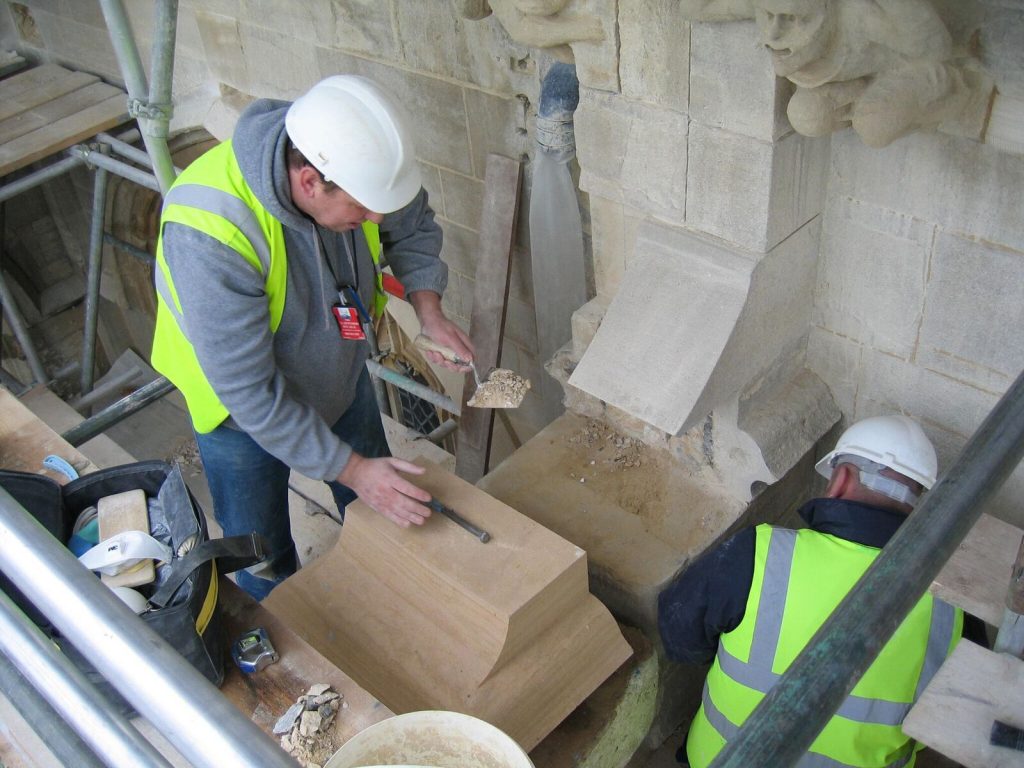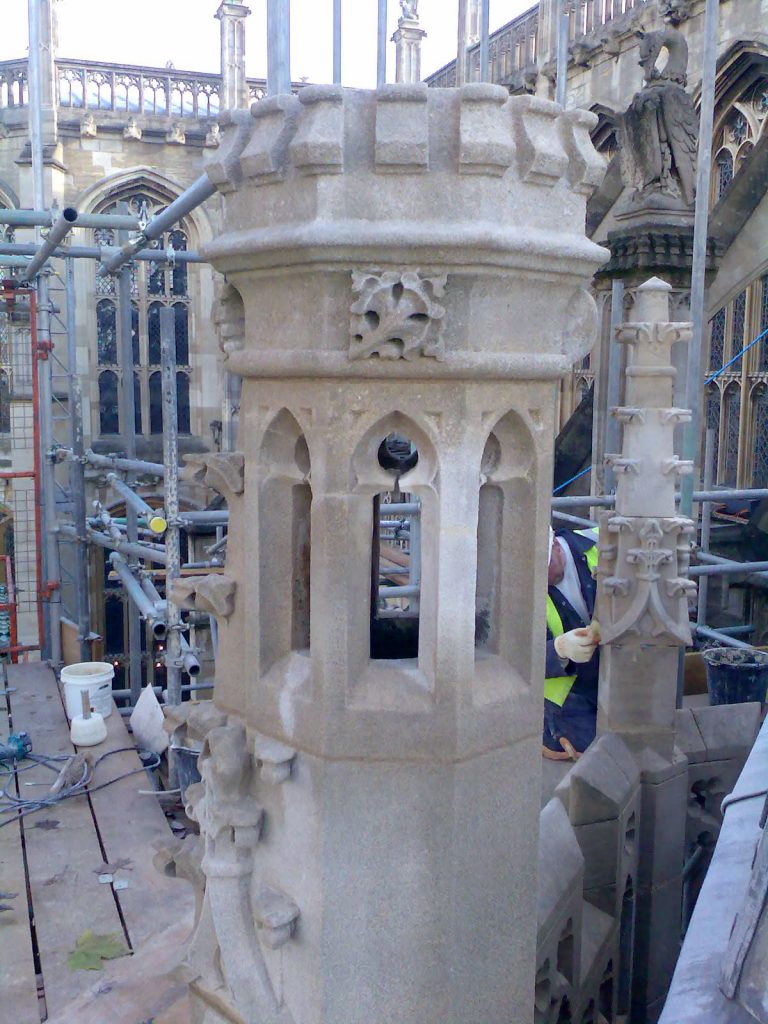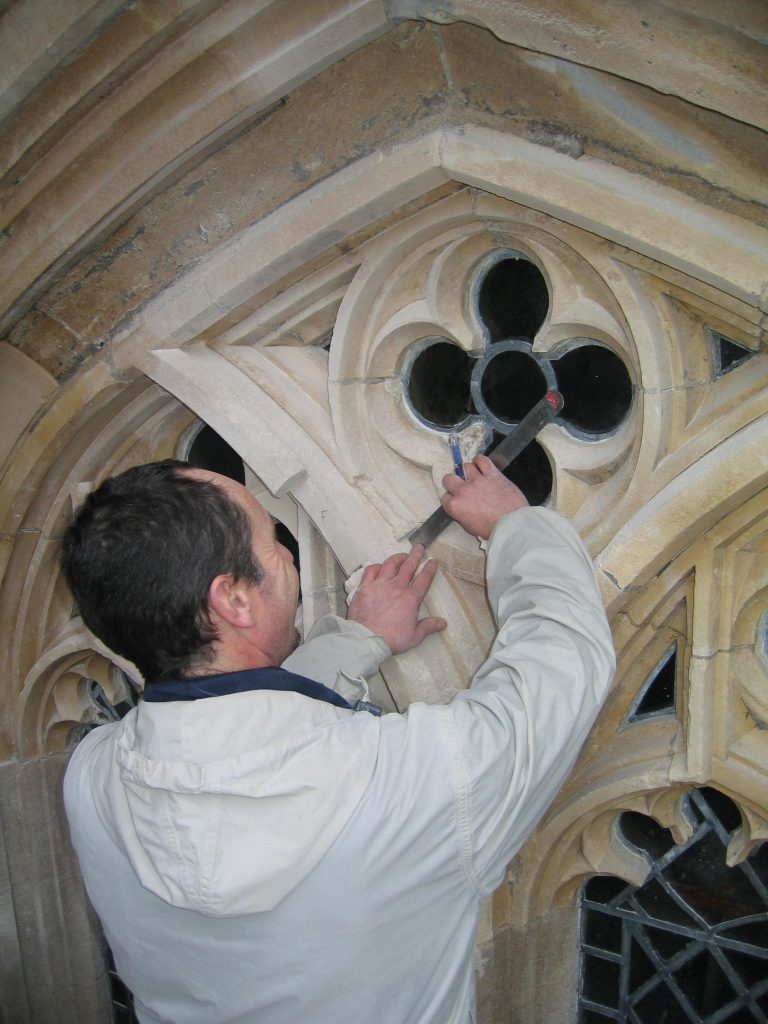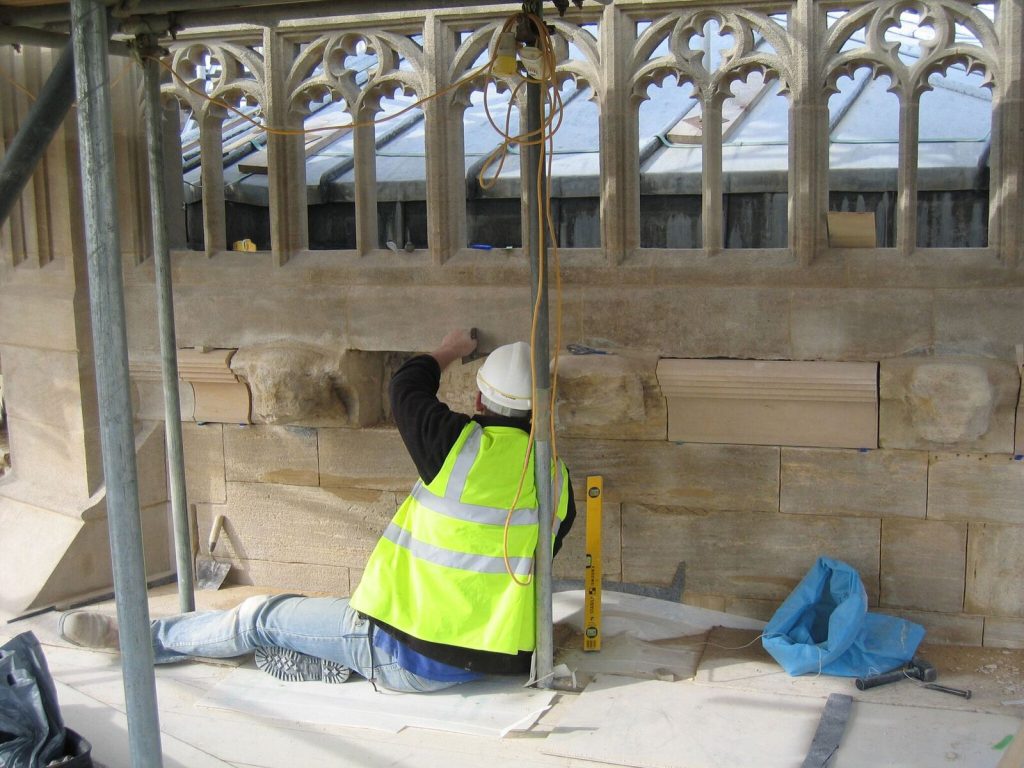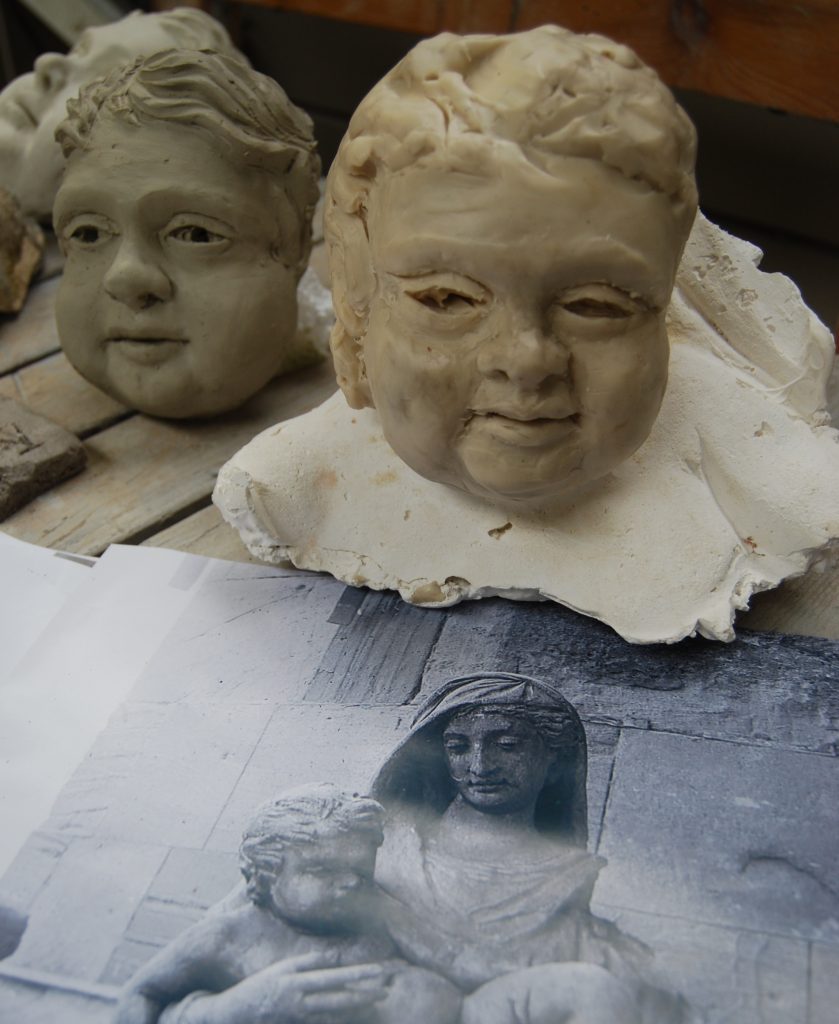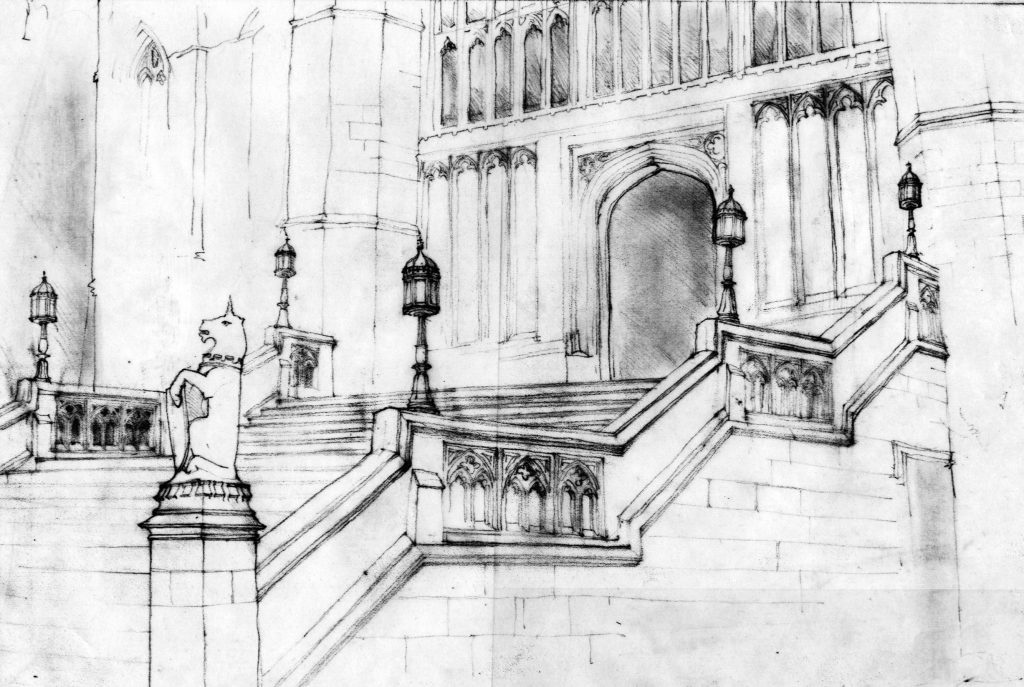External Repairs
The Quinquennial Survey Report advised stone ashlar, weatherings, dressings and tracery to be more decayed to the south elevation buttresses, bays and clerestory walls to the nave and quire than to the north due to thermal stress from cyclical heating and cooling on the sunny side of the chapel. Although substantial stone repairs were carried out in the 1920’s following earlier phases of restoration, surviving early elements of stonework to pinnacles which were presumably good enough at that time are subsequently suffering and require repair, mostly relating to traceried elements and grotesque string courses, etc. Three phases of external stonework repairs out of eight phases proposed stepping around the chapel elevations have been completed to date, to the Bray Chantry, Nave South Elevation 2006, and Chapel West Front including the Urswick Chantry. The scope of works being to clean stonework using soft bristle brushes and hand held water mist sprays, remove heavy pollution using poultices applied by specialist conservators, replace badly decayed stones, piecing in new sections selected from a palette of different stones, including to carved mouldings and weatherings using new stones tooled to visually merge with surrounding areas, re-mortar pointing and lime mortar repairs, conservation of sculpture and grotesques, cleaning and conserving stained glass and iron ferramenta, and repair of cast lead roofing where accessible from the scaffolding. Stones used for the award-winning restoration works have been Cotswold Syreford to replace no longer available Cotswold Taynton, best quality Caen stone from Normandy to match the original windows and tracery, and occasionally Northamptonshire Clipsham for repairs to early 20thC stone repairs.



